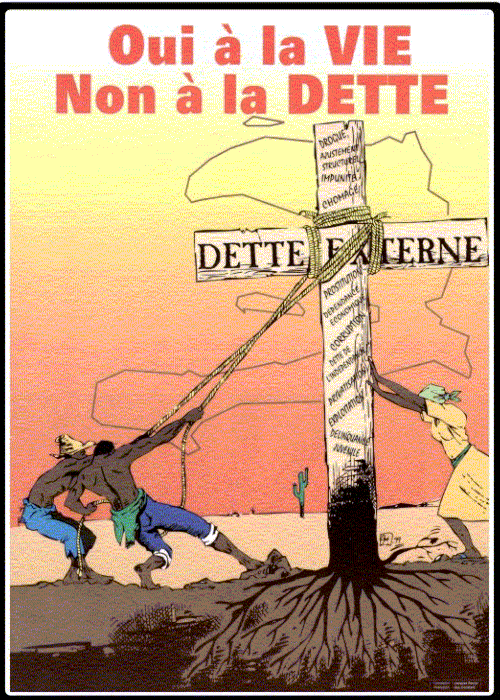The history of the haitian debt goes back to the founding of this nation which was able to win its independence from French domination in 1804. From this date and until 1825, Haiti had difficulty in getting rid of its image as a pariha state, an image foisted on them by wealthy slave-owning interests. Before the difficulty of becoming recognized as an independent state by the international community, among which many of the key players maintained their slave-holding practices, and faced by french pretentions of reclaiming under its yoke the rebel state, the Haitian governemnt had to buy its recognition by the international community. In 1814, in order to come to terms with France’s ambitions which put pressure on the new state, Alexandre Pétion proposed for the first time, compensation in exchange for the recognition of the state’s independance. However, this proposal was stillborn. In spite of the failure of this proposal by his predecessor, Jean-Pierre Boyer reiterated the offer and after Charles X assumed power in 1824, the deal changed. Haitian independence was fully recognized by France on the condition of compensation in the amount of 150 million francs to offset the losses suffered by the former colonists, an amount which is equivalent to 400 million USD. This sum was calculated though unrigorous estimates of the values of properties owned by the former colonists based on a projection of the incomes that would have been generated by the exploitation of their properties over ten years. The sum exceded the hopes of the Haitian negociators; at the time, 150 frances represented Haiti’s total budget over ten years. Furthermore, the agreement included a clause which halved the tariffs imposed on French ships. These tariffs were the pricipal source of income for the government making the payment of the debt all the more onerous.

It is thus that Haiti was recognized as an independent state but, at what price? The largest part of the government’s reources were tapped by debt payments. Because its income relied mainly on charging tariffs, it became through the massive exportation of products such as cotton, logwood, and cacao, and above all, coffee, that the government settled its accounts. For Haitians, this became a heavy burden to bear. The woes that they suffered beore Independence, paradoxically, were followed by a debt to compensate the damages incurred by the former French colonists. On this point it may be useful to recall the calculation conducted by Hérard Dumesle, the principal opponent of Jean-Pierre Boyer regarding the issue of reparations. Dumesle established that the unpaid salaries of the workers during the time of slavery, from 1665 to 1790, was around 25 billion francs. Although this calculation was not an example of rigorous work, it evokes the absurdity of compensating the losses suffered by the exploiters following the liberation of their subjugated workers.
The payment of the colonial debt was not sound, but after many difficulties, the debt was completely absorbed in 1883. In spite of the settling of accounts, the haitian government plunged the country into a spiral of debt. Thus, in 1874, the new president, Michel Domingue borrowed 10 million francs with the intention of developing the economy of his country. Fifteen years later, President Florvil Hyppolite, following in the same spirit, contracted a debt of 50 million francs. Next, another loan was added in 1910 rasing the debt to 65 million francs. Unfortunately, these loans were not favorable for the development of the durable infrastructure of Haiti. A large part of these loans were monopolized by the payment of loans or misappropriated by the instigators of the loans. For example, on the loan of 50 million francs to Domingue, 1.5% on the total was alloted to Septimus Rameau, the vice-President for having facilitated the loan .. In brief, these loans did little for the development of Haiti and heavily monopolized the resources of the country. For example, in 1908, coffee represented 83.5% of the income generated by tariffs and of that 97.8% was allotted to paying the debt.
Click on the link above to download the complete document with illustration Haiti: Why is it necessary to relieve Haiti of its debt burden?